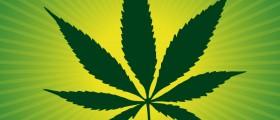Nowadays, caffeine is probably the most sought psychoactive drug all over the world. A majority of people intake caffeine every single day in various forms. It can be either a cup of coffee or tea or a soft drink. A vast number of people who drink coffee every day cannot imagine their day without the morning cup of coffee.
Most people who drink coffee know that caffeine is a stimulant. When a person consumes caffeine, his or her nervous system will be more alert and a person will no longer feel drowsiness. Doctors even recommend caffeine to patients who suffer from migraine headaches or asthma.
Sources
A single cup of coffee has at least 95 mg of caffeine in it but there are some cups that contain 200 mg of caffeine. On the other hand, a cup of tea has between 40 and 120 mg of caffeine while caffeinated soft drinks have no more than 55 mg of caffeine. Even certain medications for the cold have caffeine in them and people who need to overcome the natural drowsiness of being sick purchase them. Weight loss supplements also contain caffeine.
Safe levels
Studies have shown that an adult should not consume more than two or three cups of coffee per day, which is around 250 mg of caffeine. However, some people are more sensitive to caffeine so they should consume even less coffee or tea.
Myths
All sorts of stories are being told about caffeine. Some say that a person can lose weight by consuming it but none of the studies have yet backed up that claim. Lots of people, students, in particular, think that a lot of caffeine will make them better at learning and remembering.
A normal dosage of caffeine will better a person's attention and prevent drowsiness. However, if a person intakes too much he or she will feel jittery and will not be able to focus on the learning.
Overdose
Even though caffeine is safe when consumed in moderate quantities, a person who intakes too much will suffer an overdose. In that case, a person will experience nausea and headache. Along with the feeling of jittery, these are only the warning signs.
A person who neglects these signs and continues to drink caffeine may end up with caffeine toxicity.
Symptoms of the such disorder are dizziness, vomiting, hallucinations, and irregular heartbeat. A person should go to the hospital if he or she suffers from any of the symptoms.
Caffeine withdrawal symptoms include headache, constipation, runny nose, anxiety, nausea, vomiting, craving, nervousness, insomnia, and irritability. Apart from these, a person may also suffer from shakiness, cramps, fatigue, drowsiness, dizziness, depression, apathy, and inability to concentrate. Out of all these, a throbbing headache is the one that occurs in most cases.
- After oral ingestion, caffeine is rapidly and completely absorbed into the bloodstream, with peak blood levels reached in 30 min to 45 min. Caffeine is metabolized by the liver and is excreted by kidneys via urine. It is quickly eliminated, with a typical half-life of four to six hours.
- Caffeine is known to cross the placenta and decrease blood flow to the placenta, although the specific effects on a fetus are not known. It is also unknown, what effects caffeine withdrawal symptoms in a pregnant mother has on a fetus.
- Caffeine is rapidly and completely absorbed in humans within 45 minutes of ingestion. Peak plasma concentrations are achieved between 15 and 120 minutes after oral ingestion. Its physiologic effects are a result of inhibition of adenosine activity and phosphodiesterase - among others. The mean half-life of caffeine is about five hours.
- Re-administration of caffeine typically reverses withdrawal symptoms rapidly. Individuals who are determined to rid themselves of caffeine dependence should be advised to decrease caffeine consumption gradually to prevent the caffeine-withdrawal syndrome.
- Some symptoms, such as a headache, can be effectively treated with over-the-counter analgesic medications. Gastrointestinal symptoms, such as nausea or vomiting, can also be treated with over-the-counter medications. On the other hand, constipation that is frequently reported during the caffeine withdrawal period can be mitigated by increasing dietary fiber consumption or over-the-counter medications that promote bowel function. Oral or intravenous hydration and rest/sleep can alleviate many symptoms of caffeine withdrawal as well.
- The high-risk population is teenagers, adolescents, students, heavy-duty workers, and night shift workers especially. Caffeine withdrawal should be a high index of suspicion in these group of the patient presenting with headache, fatigue, decreased energy/activeness, decreased alertness, drowsiness, decreased contentedness, depressed mood, difficulty concentrating, irritability, and feeling foggy/not clearheaded.


















Your thoughts on this
Loading...